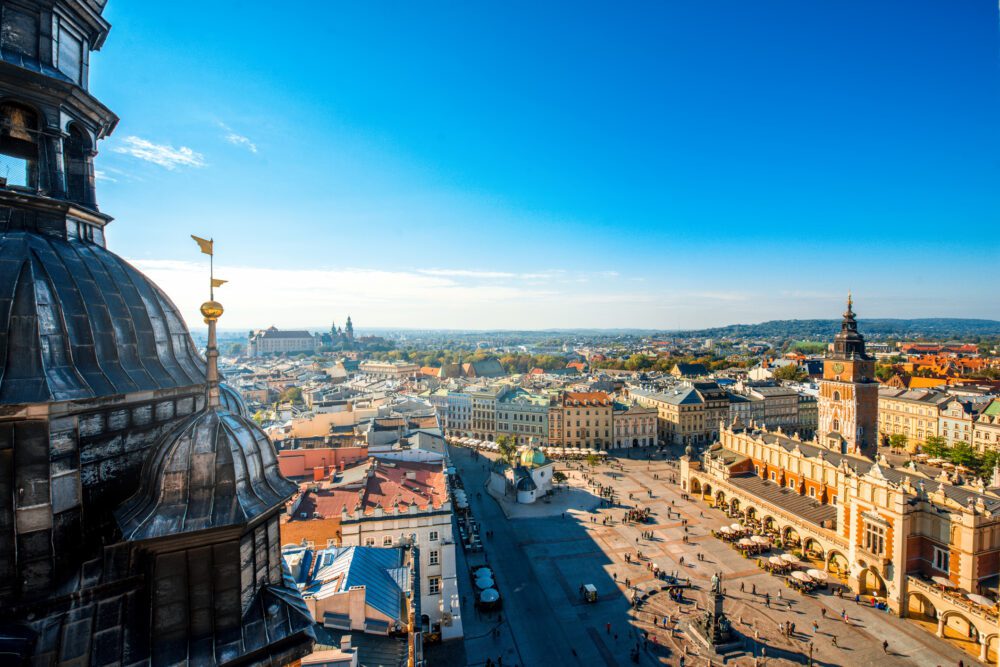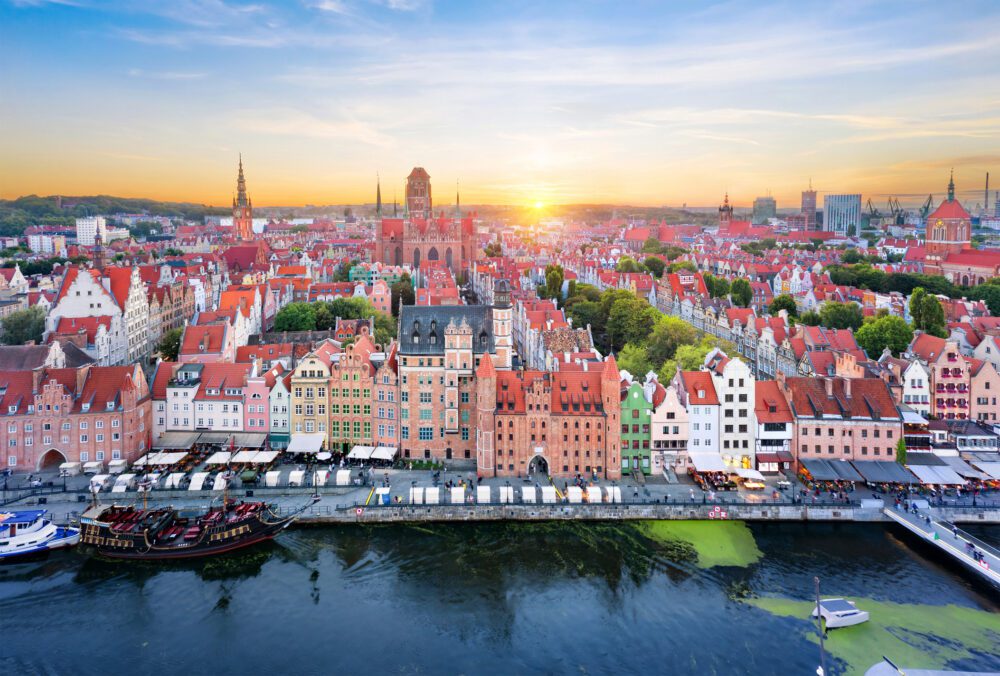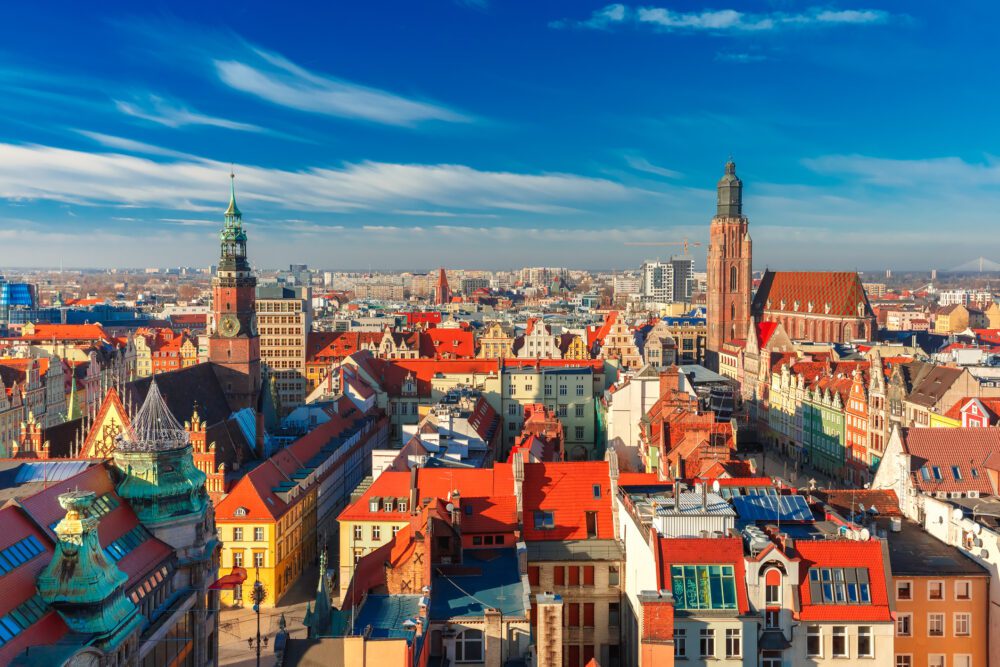
Introduction
Poland is a country that often flies under the radar, overshadowed by its more famous neighbours like Germany and the Czech Republic. But those who take the time to explore this fascinating nation are richly rewarded. From the historic streets of Krakow to the dynamic energy of Warsaw, Poland is packed with history, culture, stunning architecture, and natural beauty. Whether you’re exploring medieval towns, hiking in the Tatra Mountains, or relaxing on the Baltic coast, Poland offers a wide range of experiences that make it a must-visit European destination.
The first time I visited Poland, I was amazed by the variety the country had to offer. One day, I was exploring medieval castles and the next, I was hiking through dense forests and mountain paths. The people are warm, the food is hearty, and the landscapes are incredibly diverse. Poland is a place where you can dive deep into history, soak up vibrant modern culture, and lose yourself in nature—all within a single trip. Here’s why Poland should be at the top of your travel list.
Table of Contents
Reasons You Should Visit Poland
1. Rich History and Culture
Poland’s history is both grand and tragic, making it one of the most fascinating countries in Europe. From its medieval golden age to its resilience in the face of war and occupation, Poland’s story is told through its cities, monuments, and museums. Warsaw, the capital, is a perfect example of this resilience. Almost completely destroyed during World War II, the city has been meticulously rebuilt, with its Old Town now a UNESCO World Heritage site.
In Krakow, you can step back in time to the days when Poland was the heart of a powerful kingdom. Walking through Wawel Castle and Rynek Główny, Europe’s largest medieval square, is like stepping into a living museum. And then there’s Auschwitz, one of the most sobering historical sites in the world, where you can learn about the horrors of the Holocaust. Poland’s history is deep and complex, and it’s impossible not to be moved by it.
2. Vibrant Cities and Modern Life
While Poland is steeped in history, it’s also a modern, vibrant country with dynamic cities that offer a mix of old-world charm and cutting-edge culture. Warsaw is a great example of this, with its impressive skyline and buzzing nightlife. I loved exploring the hip Praga district, filled with art galleries, cafés, and craft breweries. In Poznan, another lively city, the streets are filled with students, giving it a youthful, creative energy. The Stary Browar, a shopping centre and art gallery housed in a former brewery, is a perfect example of how Poland blends its past with the present.
Then there’s Gdansk, a city on the Baltic coast that’s as modern as it is historic. I spent hours wandering through the beautifully restored streets of Long Market, admiring the colourful facades, and visiting the European Solidarity Centre, which tells the story of Poland’s role in the fall of Communism. Poland’s cities are full of surprises, with a blend of old and new that’s both exciting and refreshing.
3. Affordable and Accessible
One of the biggest perks of travelling to Poland is how affordable it is compared to other European countries. Whether it’s a meal in a local restaurant, a night in a charming hotel, or a ticket to a museum, everything feels like great value for money. I found that I could indulge in fantastic meals, stay in high-quality accommodation, and explore Poland’s many attractions without breaking the bank.
Getting around is also easy. Poland has a modern, efficient public transport system, with trains and buses connecting all the major cities. I found it simple to travel from Warsaw to Krakow by high-speed train, and the journey was not only fast but also incredibly scenic. If you’re looking for a destination that offers excellent value for money without sacrificing quality, Poland is the perfect choice.
4. Breathtaking Natural Beauty
While Poland’s cities are undeniably impressive, its natural beauty is equally stunning. The country is home to vast forests, serene lakes, and towering mountains. If you’re an outdoor enthusiast, Zakopane in the Tatra Mountains is a must-visit. I spent a few days hiking in this region, surrounded by breathtaking alpine scenery, and it was one of the highlights of my trip. In winter, Zakopane turns into a winter sports haven, with plenty of opportunities for skiing and snowboarding.
The Białowieża Forest, one of the last and largest remaining parts of the primeval forest that once covered much of Europe, is another natural gem. It’s home to the European bison, and exploring its ancient woodlands feels like stepping into a different world. Whether you’re hiking, skiing, or simply enjoying the tranquillity of the countryside, Poland’s landscapes will leave you in awe.
5. Delicious Traditional Cuisine
Polish food might not have the same international fame as Italian or French cuisine, but trust me—it’s delicious and heartwarming. From the moment I tasted my first pierogi (dumplings), I was hooked. These little parcels, filled with everything from potatoes and cheese to meat or mushrooms, are a staple of Polish cuisine and incredibly comforting. I also loved bigos, a traditional hunter’s stew made with cabbage and meat, and żurek, a tangy rye soup served with sausage and boiled eggs.
The food culture in Poland is also evolving, with many cities embracing international influences and offering a mix of traditional and modern dishes. In Krakow, I stumbled upon a food market where street vendors served everything from gourmet pierogi to craft beers. And don’t forget to try vodka—Poland’s national spirit. A shot of Żubrówka, a bison grass vodka, is the perfect way to finish a meal.
Best Places to Visit in Poland
1. Warsaw

Poland’s capital, Warsaw, is a city of contrasts. On one hand, you have the beautifully reconstructed Old Town, with its colourful buildings and charming squares. On the other, there’s the modern skyline, dominated by the towering Palace of Culture and Science. I spent my mornings wandering through Łazienki Park, one of the most peaceful spots in the city, and my afternoons exploring the many museums, including the impressive POLIN Museum of the History of Polish Jews.
One of the highlights of my time in Warsaw was visiting the Warsaw Uprising Museum, which tells the story of the city’s heroic resistance against Nazi occupation during World War II. The museum is incredibly well done and gives a real sense of the courage and sacrifice of the Polish people. Warsaw may not have the instant charm of Krakow, but it’s a city that grows on you the more time you spend there.
2. Krakow

If you only visit one city in Poland, make it Krakow. The city is a treasure trove of history, art, and culture, with its beautifully preserved Old Town and the imposing Wawel Castle. I spent hours just wandering through Rynek Główny, the main square, which is lined with charming cafés and restaurants. The square is home to the iconic St. Mary’s Basilica, where you can climb the tower for incredible views over the city.
Just outside of Krakow is Auschwitz, the former Nazi concentration camp that stands as a haunting reminder of the horrors of the Holocaust. Visiting Auschwitz was a deeply emotional experience, but it’s something that every traveller to Poland should do. Back in the city, I also explored Kazimierz, the old Jewish quarter, which is now a trendy area filled with bars, art galleries, and street art. Krakow is a city that perfectly balances its tragic history with a vibrant, modern culture.
3. Gdansk

Gdansk is a city with a unique atmosphere, thanks to its blend of Polish, German, and maritime history. Its location on the Baltic coast has made it a hub for trade and culture for centuries, and the beautifully restored Long Market is a testament to its rich past. Walking through the narrow, cobbled streets of Gdansk’s Old Town, I was captivated by the colourful facades of the merchant houses and the towering St. Mary’s Church, the largest brick church in the world.
Gdansk is also where the Solidarity movement began, which played a key role in bringing down Communism in Poland. The European Solidarity Centre is a fantastic museum that tells this important story. After a day of sightseeing, I took a boat trip out to the Westerplatte, the site where World War II began. Gdansk is a city that seamlessly weaves together history, culture, and scenic beauty.
4. Wroclaw

Wroclaw, often called the “Venice of Poland” because of its many rivers and islands, is one of the most charming cities I visited. The heart of Wroclaw is its Rynek, or market square, which is lined with colourful townhouses and Gothic architecture. The Town Hall is particularly striking, and I loved sitting in a café in the square, watching the world go by.
One of the quirkiest aspects of Wroclaw is its collection of tiny gnome statues scattered throughout the city. I made it a mission to spot as many of these little bronze figures as I could—there are over 300! The city also has a lively cultural scene, with plenty of art galleries, theatres, and festivals. Wroclaw is a city that feels both historic and modern, making it a great destination for a relaxed weekend getaway.
5. Poznan
Poznan is one of Poland’s oldest cities, and it’s packed with history and energy. The highlight of my visit was Poznan’s Old Town, where I was treated to the daily “show” at Poznan Town Hall—every day at noon, mechanical goats emerge from the clock tower and butt heads, a charming local tradition. The Stary Rynek (Old Market Square) is one of the most beautiful in Poland, surrounded by pastel-coloured buildings and lively restaurants.
Poznan is also a great place to experience Polish food. I took a cooking class where I learned how to make pierogi from scratch, which was a fun and delicious way to dive into local culture. The city’s Cathedral Island (Ostrów Tumski) is another must-see, home to Poland’s oldest cathedral and the burial place of its first rulers.
6. Lodz
If you’re into urban exploration and alternative culture, Lodz will fascinate you. Once an industrial powerhouse, Lodz has transformed into a creative hub, with its abandoned factories turned into art spaces, galleries, and cafés. Piotrkowska Street, one of the longest commercial streets in Europe, is the heart of the city, lined with shops, restaurants, and vibrant street art.
One of the most interesting places I visited in Lodz was Manufaktura, a massive shopping, arts, and leisure complex housed in a former textile factory. The city is also home to the Film School, which has produced many of Poland’s most famous directors. Lodz may not have the same historic charm as Krakow or Gdansk, but it’s an exciting, up-and-coming city that’s worth exploring.
7. Zakopane
For outdoor lovers, Zakopane is the gateway to the Tatra Mountains and Poland’s premier mountain resort. I visited in summer, and the hiking trails were spectacular. One of the best hikes I did was to Morskie Oko, a stunning lake surrounded by jagged peaks. The scenery here is breathtaking, and the air is so crisp and fresh that it’s impossible not to feel rejuvenated after a few days in the mountains.
In winter, Zakopane transforms into a ski and snowboarding paradise. The town itself is also worth exploring, with its unique Goral (highlander) wooden architecture and lively market selling local crafts and food. Don’t leave Zakopane without trying oscypek, a smoked cheese made from sheep’s milk that’s a local speciality.
8. Torun
Torun is one of Poland’s most beautiful medieval cities and the birthplace of Nicolaus Copernicus. Its stunning Gothic architecture has earned it UNESCO World Heritage status, and I was immediately struck by how well-preserved the old town is. The city’s Teutonic Castle and Old Town Hall are must-sees, and walking through the narrow, winding streets feels like stepping back in time.
Torun is also famous for its gingerbread, which has been made here for centuries. I visited the Gingerbread Museum, where I got to make my own traditional gingerbread cookies, which was both fun and delicious. Torun’s mix of history, culture, and charm makes it a perfect stop for anyone interested in Poland’s medieval past.
9. Lublin
Lublin is one of Poland’s most underrated cities, with a beautifully preserved old town and a fascinating history. Walking through Krakowskie Przedmieście, the city’s main street, I was struck by how lively and vibrant the city feels. The Lublin Castle, with its Gothic chapel, is one of the city’s highlights, offering great views over the surrounding area.
Lublin is also known for its rich Jewish heritage, and a visit to the Majdanek concentration camp just outside the city is a moving reminder of the horrors of World War II. Today, Lublin is a hub for culture and the arts, with plenty of theatres, galleries, and festivals that draw visitors from across the country.
10. Szczecin
Situated near the German border, Szczecin is a city that often goes unnoticed by tourists but has plenty to offer. Its Pomeranian Dukes’ Castle is one of the main attractions, offering a fascinating glimpse into the city’s history as part of the Hanseatic League. I spent a quiet afternoon wandering through the castle’s courtyards and exploring its small but interesting museum.
Szczecin’s harbour area is also worth exploring, with its mix of modern architecture and old industrial buildings. The city’s Wały Chrobrego promenade offers stunning views over the Oder River, and it’s a great place for a relaxing stroll. If you’re looking for an off-the-beaten-path destination with a blend of history and modernity, Szczecin is a great choice.
Travel Tips for Poland
Getting Around Poland
Poland has a well-connected public transport system, with trains and buses running frequently between cities like Warsaw, Krakow, and Gdansk. Trains are the fastest way to travel long distances, while buses are great for reaching smaller towns or remote areas. In cities, trams and buses are the most common forms of transport, and tickets are inexpensive. If you’re planning to explore the countryside, renting a car is a good option, though be aware that road conditions can vary in rural areas.
Best Time to Visit Poland
The best time to visit Poland is in spring (April to June) and autumn (September to October) when the weather is mild, and there are fewer crowds. These seasons are perfect for sightseeing in cities like Warsaw and Wroclaw, or exploring the Tatra Mountains. Summer (July to August) offers warm weather and outdoor festivals, but it’s also the peak tourist season, so popular destinations like Krakow can get crowded. Winter is cold and snowy, ideal for skiing in Zakopane or experiencing the festive Christmas markets.
Passport and Visa Requirements for Poland
Poland is part of the Schengen Area, so travellers from EU/EEA countries can enter with just an ID card. Visitors from countries like the US, UK, Canada, and Australia can stay visa-free for up to 90 days within the Schengen Zone. Make sure your passport is valid for at least three months beyond your planned stay. If you’re travelling to neighbouring countries like Germany or Czech Republic, border checks are minimal but always carry your passport.
Currency and Banks in Poland
Poland uses the Polish Zloty (PLN), not the euro, though euros are sometimes accepted in tourist areas. ATMs are widely available, especially in cities, and most businesses accept credit and debit cards. However, it’s a good idea to carry some cash for small purchases, especially in rural areas or markets. Tipping in restaurants is common, usually 10-15%, but check if service is included in the bill before adding a tip.
Language and Useful Phrases to Know
The official language is Polish, and while English is widely spoken in tourist areas, particularly by younger people, learning a few basic Polish phrases can be helpful. Try “Dzień dobry” (good day), “Dziękuję” (thank you), and “Proszę” (please). In rural areas, English may be less common, so knowing some Polish phrases will go a long way in making connections with locals.
Budgeting and Costs for Poland
Poland is one of the more affordable countries in Europe. Accommodation, dining, and public transport are reasonably priced, especially compared to Western Europe. City passes, like the Krakow Card or Warsaw Pass, offer discounts on attractions and free public transport, helping you save money. Local food, particularly in milk bars (traditional Polish cafeterias), is delicious and inexpensive. Outside of tourist hotspots, you’ll find that your money goes a long way in Poland.
Conclusion
Poland is a country that has something for everyone. Whether you’re drawn to the history and architecture of Krakow, the vibrant city life of Warsaw, or the stunning natural beauty of the Tatra Mountains, Poland offers a rich and diverse travel experience. What I love most about Poland is how it seamlessly blends the old and the new—modern cities full of energy sit alongside ancient towns steeped in history.
Poland’s affordability, friendly people, and variety of experiences make it a fantastic destination for both first-time visitors to Europe and seasoned travellers looking for something a little different. Whether you’re exploring medieval castles, hiking through pristine forests, or enjoying a plate of pierogi in a local café, Poland is a country that will surprise and delight you at every turn. Trust me, once you’ve experienced the magic of Poland, you’ll be planning your return trip before you’ve even left.
